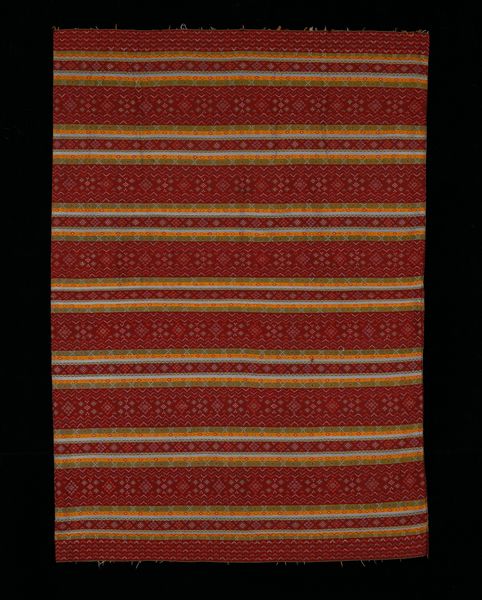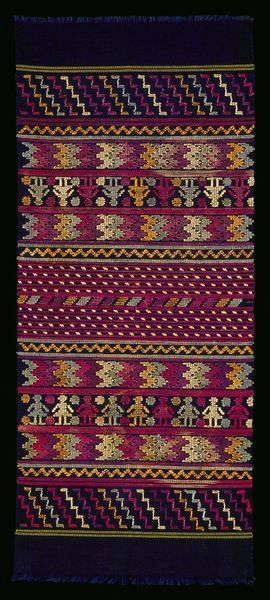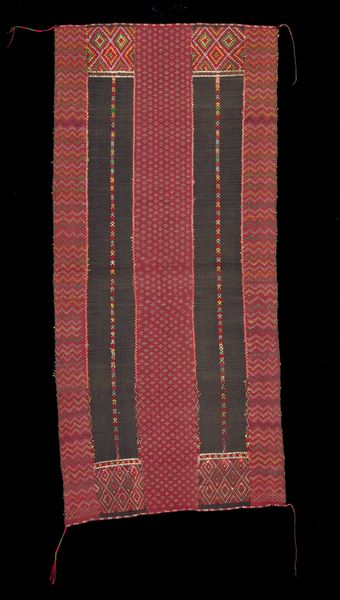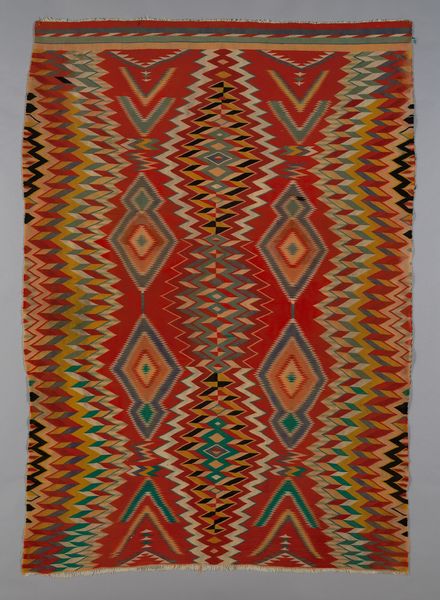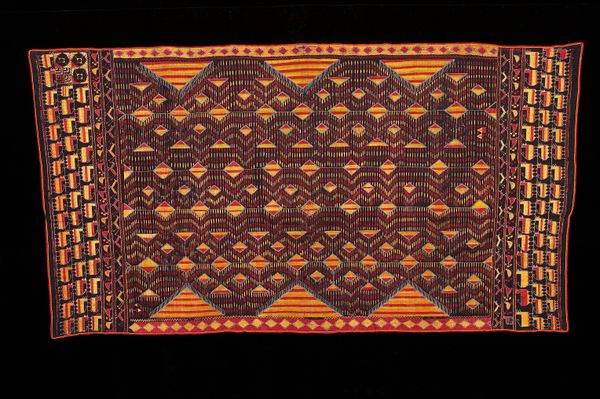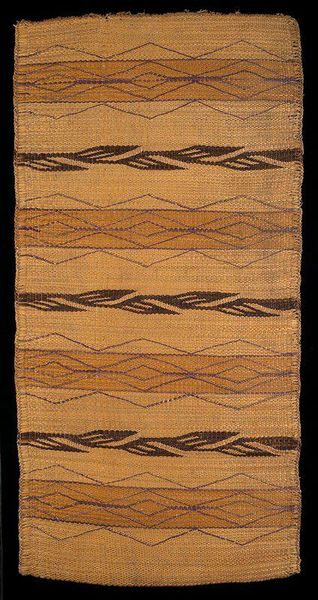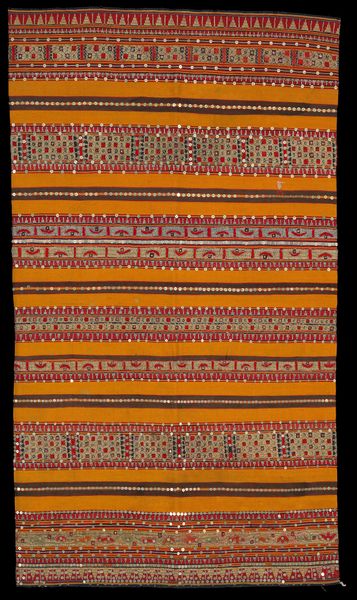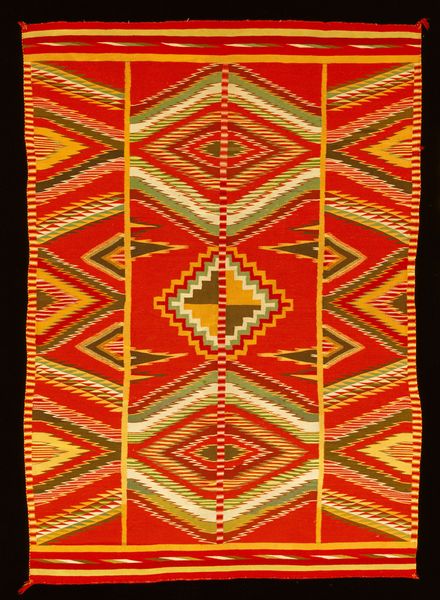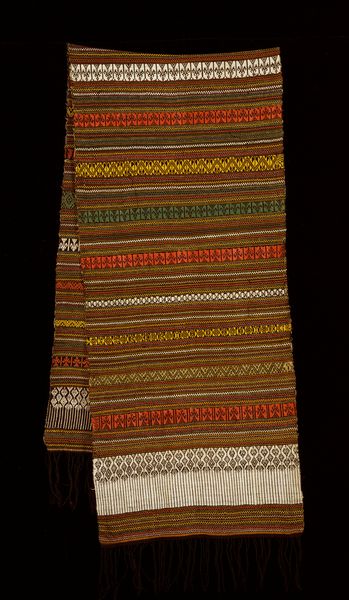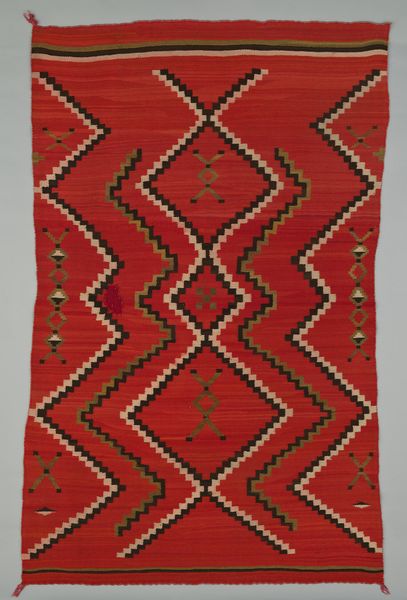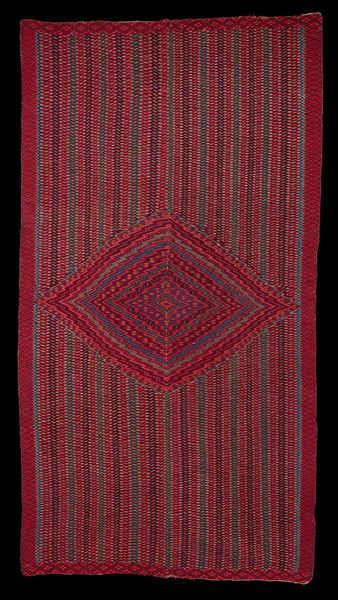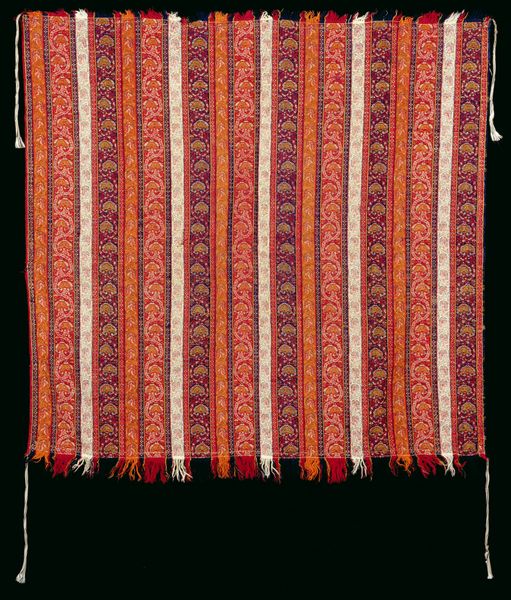
fibre-art, weaving, textile, cotton
#
fibre-art
#
weaving
#
textile
#
geometric
#
cotton
#
indigenous-americas
Dimensions: 52 1/8 x 27 7/8 in. (132.39 x 70.82 cm)
Copyright: Public Domain
Editor: Here we have a Cloth, or Tzute, from around the 20th century, location is unknown but attributed to the Maya people. The textile artwork is composed of cotton and silk. I'm really drawn to how dynamic the geometric shapes are, and how each horizontal area on the textile presents very distinct textures. How would you begin to describe this work? Curator: This textile demonstrates a sophisticated understanding of visual rhythm and balance through geometric repetition. Note the tripartite division of the piece, bookended by bands of repeating diagonal elements in purple, yellow, and red, contrasted by the central vertical field dominated by stacked chevrons in green, gold, and white. How does this organization affect your perception of the piece's overall structure? Editor: I see the way the textile establishes hierarchy via vertical stripes: there's a strong vertical line of symmetry at its center. The zigzags make it less rigid. So would you say the weaving technique emphasizes or deemphasizes the inherent qualities of cotton and silk as materials? Curator: A fascinating question. The tight weaving and structured patterns somewhat subdue the inherent softness of the materials. Rather, the focus is shifted to how the fibers interact visually – their chromatic relationships and their contribution to the overall geometric tapestry. The warp and weft interplay is a symphony of structured color. Editor: So, instead of appreciating its pure, material quality, the cloth serves as a foundation for this visual experience. That helps clarify how one might analyze the piece. Curator: Precisely. We move beyond mere material appreciation and engage with a carefully constructed visual dialogue predicated on form, color, and compositional harmony. These intrinsic aspects become the locus of meaning. Editor: This lens has really altered my initial perspective. The strict structure emphasizes how visual experience triumphs over material appreciation. Curator: Indeed. By concentrating on its construction, the weaving's patterns yield meaning through composition.
Comments
No comments
Be the first to comment and join the conversation on the ultimate creative platform.

